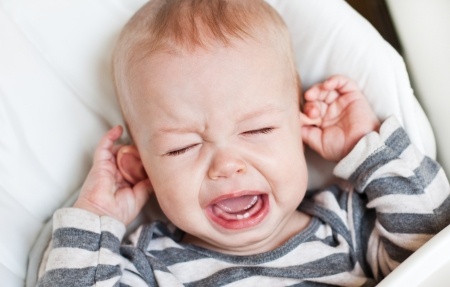Paediatrics
Understanding Paediatric Health

The smaller bodies of infants and children are physiologically different from those of adults. Hence treating children often requires a diferent approach to treating adults. Here are some of the areas here paediatric health care differs significantly from adult health care.
IMMUNISATION
This is a simple, safe and effective way of protecting children from diseases that can cause serious illnesses and sometimes death.
Infections in children can start right from birth. Though there are some antibodies that do cross the placenta, the protection they provide is usually inadequate and most of the important antibodies for infants and young children are very low in mothers. Furthermore, the immune system in young children does not work as well as in older children and adults due to its immaturity. Therefore, more frequent doses of vaccines are often needed.
The protective effect of some immunisations can last up to 30 years while others are required to be administered more often. For example, the influenza immunisation is required annually due to frequent changes of the influenza virus circulating in the community. Booster doses are also needed for some vaccines because immunity decreases over time.
FEVER
Generally, when using the axillary method (under the armpit) to take children’s temperatures, 37.5 degrees Celsius is considered a fever but when measuring from the ears, 38 degrees Celsius is considered a fever. However, there are variations to these guidelines, depending on the time of day and the activity your child is engaged in before checking his/her temperature.
The most common cause of fever is infection such as a throat, lung or tummy infection. In newborns, fever can also be caused by poor feeding that leads to dehydration and overwrapping with thick blankets in a non-air conditioned environment.
In rare cases, metabolic disorders and even cardiac failure that leads to breathing problems can cause fever.
DIARRHOEA
Diarrhoea is defined as the frequent passage of loose watery stools. If babies are breastfed or given expressed breast milk, it is normal for the stools to be somewhat loose and watery. They are only considered to have diarrhoea if their stools are looser than the usual consistency or if there is blood in the stools.
Diarrhoea is usually caused by a viral or bacterial infection. Sometimes babies have loose stools when they are on antibiotics. Teething does not cause diarrhoea. If they do have diarrhoea when they are teething, it is usually due to a mild infection caused by them putting things into their mouths.
Diarrhoea can be accompanied by fever, vomiting and bloody stools. All these symptoms are red flags, and medical attention should be sought. Babies should also be monitored for their fluid intake during the illness.
Children may have a poor appetite and tummy pain when they have diarrhoea. Once they pass motion, they may experience some relief but the pain will often return in a short while. At this stage, fluid intake is more important than eating solids. Smaller than usual amounts of fluids should be given at shorter than usual intervals, say 60 to 100ml every half-hourly to hourly. The fluids may be in the form of oral rehydrate solutions, or isotonic drinks for older children. For infants, boiled rice water is a good alternative.
If your children are below 6 months old, you should bring them to see a doctor. Older children can be observed for one or two days to ensure that they are feeding well without fever, vomiting and bloody stools.
COMMON SKIN PROBLEMS
Cradle cap appears as dry, flaky, yellowish dandruff-like, scaly patches over the scalp and sometimes over the eyebrows of babies. It usually starts after they are a month old and may last for a few weeks or months. It is not itchy and does not disturb them.
Applying some olive oil or baby oil onto the affected areas for about 10 to 20 minutes (depending on how thick the accumulation is) helps in softening the plaques. Gentle shampooing and massaging the plaques will loosen them and eventually remove the plaques. It is important not to use too much force as this might lead to abrasions. The other thing to note is that the plaques may recur but will eventually disappear.
Pimples or bumps on the cheeks and face of most newborns usually start when they are about two to three weeks old. These may extend to the forehead, scalp and even around the ears. They may worsen when babies are hot and fussy or when their skins are irritated by saliva, spit milk or even friction from clothes.
Do not apply any creams or use any acne wash. Simply washing babies’ faces with cool water will reduce the rashes.
Rashes are common in many newborns and often appear soon after birth. These appear as red patches of various shapes and sizes with tiny white or yellow heads in the centre. They are harmless and usually resolve within one to two weeks.
Typically, the rash moves from place to place till it eventually completely resolves. If the rashes have pus-filled blisters, there might be a skin infection and medical attention is required.
Atopic eczema or dermatitis is another common skin condition that often occurs in childhood. The skin may be dry, itchy and red. This commonly occurs over flexural areas such as the neck, elbows and the backs of the knees, but just about any part of the body may be affected.
Avoid scratching and rubbing the skin as this will aggravate the eczema and make the skin redder and more inflamed. This can also lead to breaks and cracks in the skin, which can then predispose it to bacterial infection.
CHILDHOOD OBESITY RISKS
Obesity and a sedentary lifestyle increase the risk of Type 2 diabetes. This chronic condition affects the way the body uses sugar (glucose).
A poor diet can cause children to develop either high cholesterol or high blood pressure or both. These conditions can contribute to the build-up of plaque in the arteries. This causes the arteries to narrow and harden, which can lead to a heart attack or stroke in later life.
Childhood obesity may cause obstructive sleep apnoea, a potentially serious disorder in which children’s breathing repeatedly starts and stops during sleep.
Furthermore, obese children tend to have a high risk of developing asthma. Unless the cycle is broken, overweight children become overweight adults.
This article is taken from our My Alvernia Magazine Issue #38. Click here to read the issue on our website or on Magzter.



